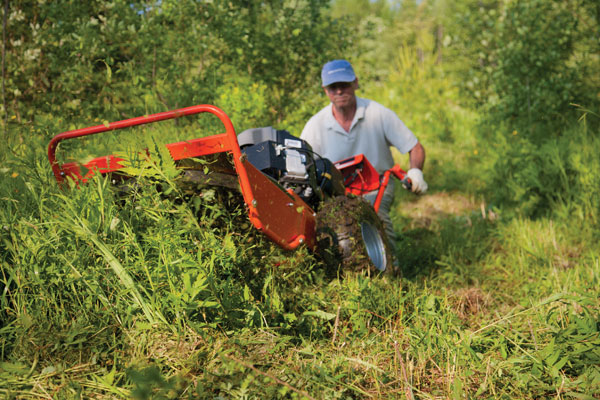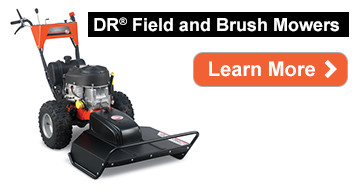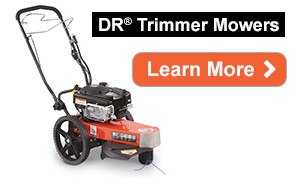
1. Decide what you want to do with the area.
Are you going to plant a wildflower meadow? Do you want a grassy area? Are you putting in a vegetable garden? Knowing what the end result is will help to inform how you proceed. For trails and other traveled areas, you’ll want to be sure to get rid of stumps and other tripping hazards. For meadows or other generally untraveled areas, a few stumps or stray trees may be fine. If you’re putting in a garden, be sure to avoid using herbicides.
2. Start with the big stuff.
If you have trees, take them out first either with a chainsaw, brush cutter, tree shear, or by hiring a tree removal service (depending on their size). If you have stumps left behind, there are multiple options for removing them. For the quickest results, a stump grinder is the ideal method (chemical methods can take years to fully remove a stump). Great ways to dispose of the trees are either in a wood chipper (which also creates valuable mulch for gardens and other landscaped areas) or by using them for firewood.
3. Now comes the fun part! 

Depending on the density and height of the weeds and brush that are left, either a brush mower or string trimmer will get rid of the remainder of the tangle. If you have woody brush that’s up to 3″ thick, the best tool will be a brush mower or a towed brush hog. They’ll chew just about everything up into a fine mulch and leave the area neat and tidy. If your overgrown area is more weedy than woody, a string trimmer might be a better choice. DR Trimmer/Mowers have much more power than traditional string trimmers (about 5X more, to be exact), and are able to trim right up close to fences, walls, and other obstacles. Depending on what end result you’re looking for, you could be finished after this step.


4. Prepare the land.
If you’re going to plant anything, such as wildflowers, grass, or a vegetable garden, you’ll want to rototill the area to mix the remaining plant material back into the soil, which will enrich it with nitrogen and other nutrients. Then, cover the area with either plastic sheet mulch, old newspapers, or heavy bark mulch for at least several months to smother any weeds that may germinate.


Finally, either plant seeds or transplant live plants that you have already raised. For wildflowers, the ideal time of year to plant will depend on the types of flowers you choose, so be sure to research them or follow the instructions on their packages. The same goes for a vegetable garden. To plant grass, spread the seed evenly by hand or with a spreader then roll the area with either a walk-behind roller or the Culti-Packer attachment if you have a DR Roto-Hog Power Tiller. Then, use bedding straw (NOT hay, which may contain seeds) to cover the ground where you have planted. This will shade the ground and continue to keep weeds from growing, while keeping in moisture for the grass seeds. Eventually, the blades will grow through the straw and it will be able to be carefully raked away. And then sit back, relax, and enjoy your newly cleaned-up yard or garden!